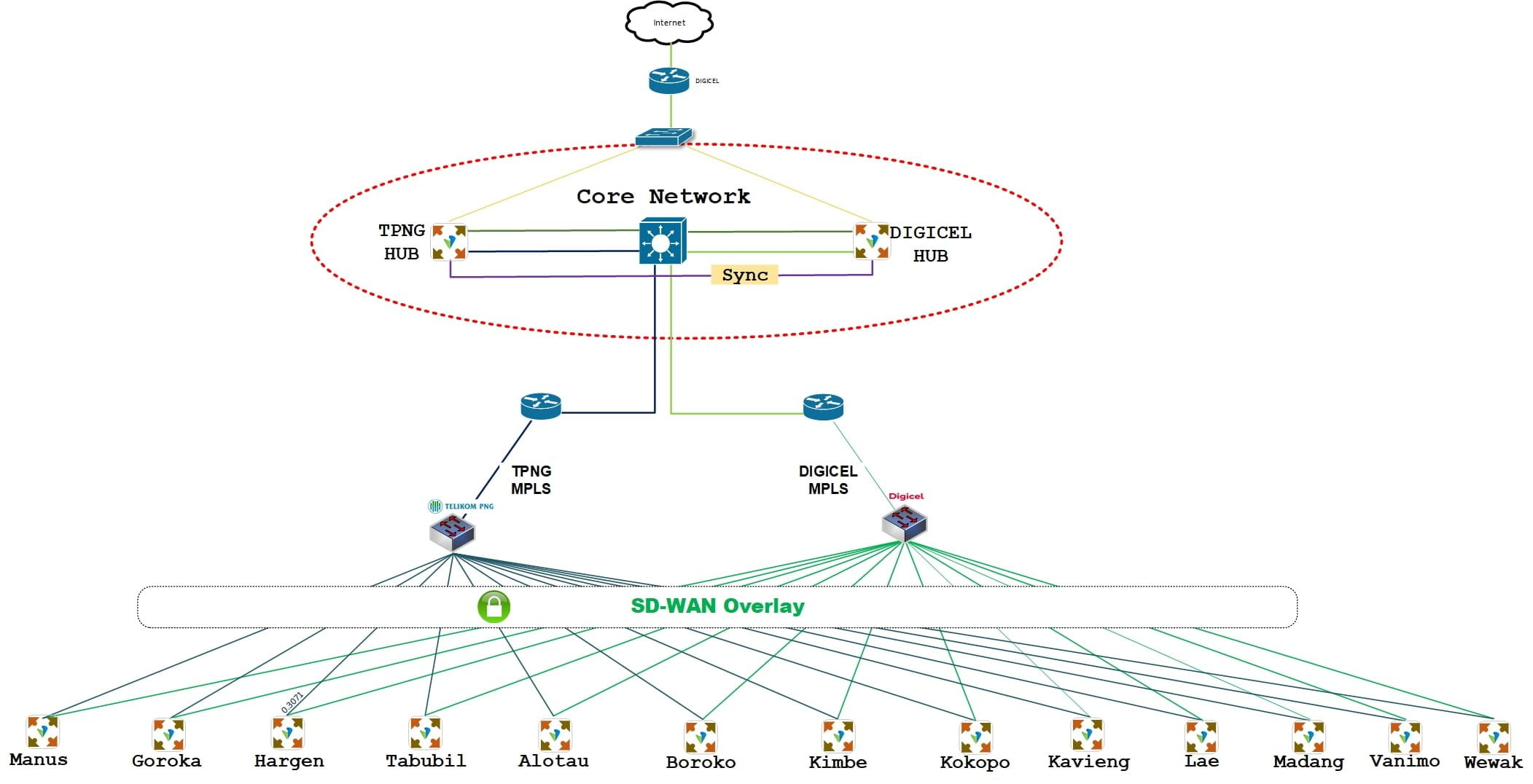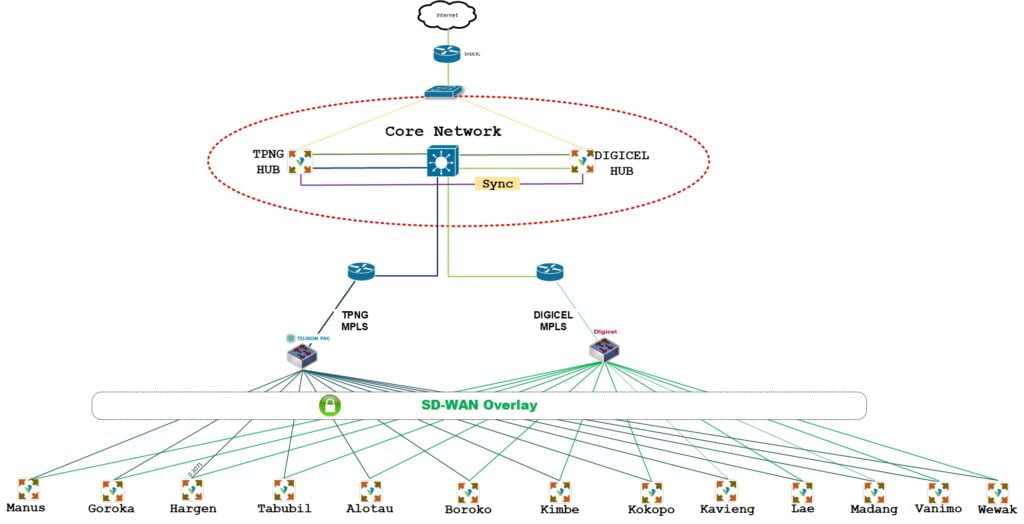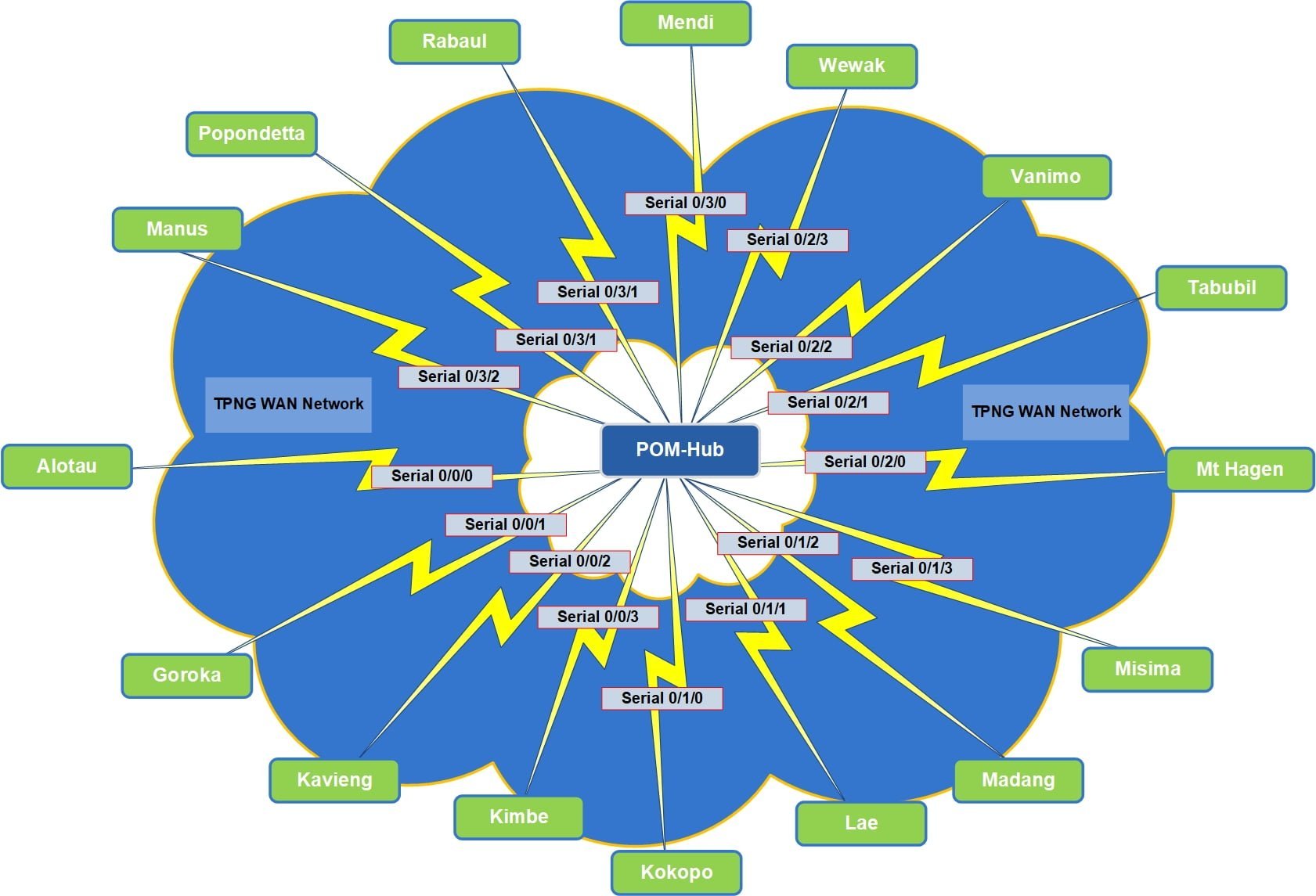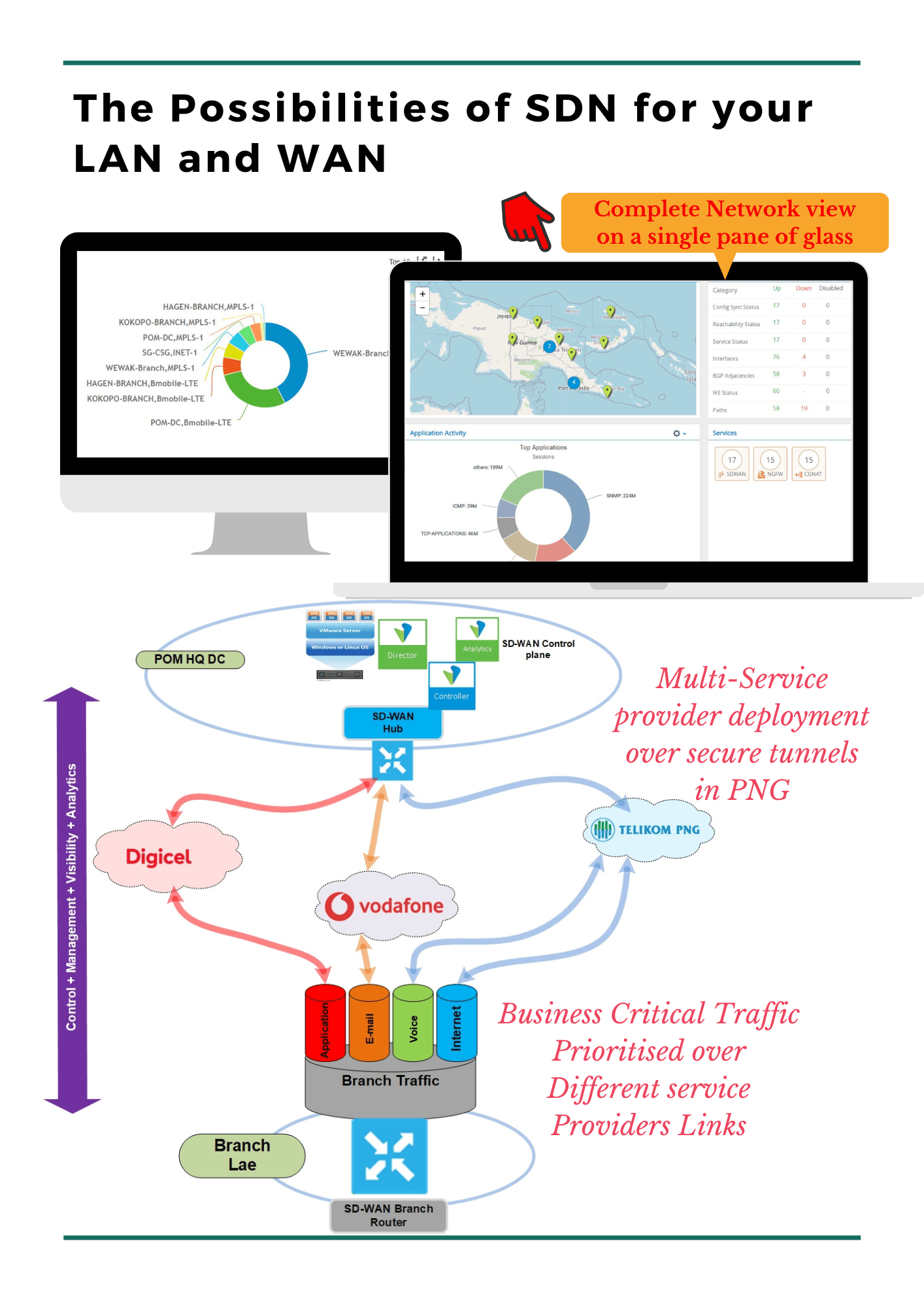
Why SD-WAN Has Failed in the Pacific Islands: A Tragic Tale of Broken Promises
By jit anbu Cisco Meraki, Cisco Viptela, Fiji, ForcePoint, Fortinet, Pacific, PNG, SASE, SD-WAN, Solomon Islands, Versa Networks No CommentsWhy SD-WAN Has Failed in the Pacific Islands: A Tragic Tale of Broken Promises
In the vast and beautiful Pacific Islands, staying connected isn’t just a luxury; it’s essential. With islands scattered like stars across the ocean, reliable network connections are critical. The geography itself presents a daunting challenge, with many enterprises operating multiple rural branches that are dependent on steady, reliable WAN connectivity. In recent years, many of these organisations embarked on a hopeful journey towards SD-WAN, dreaming of seamless, high-performance connectivity. However, reality has painted a very different picture.
The Allure and The Betrayal
Fuelled by promises of high-speed, dependable connections, reduced costs, and increased visibility and security, enterprises in the Pacific Islands were quick to adopt SD-WAN solutions. But far from Silicon Valley’s pristine labs, where most of these solutions are conceived, these organisations found that the SD-WAN solutions offered to them performed miserably under the unique conditions of the Pacific.
Enterprises that were promised gold, found themselves with dust. They were led by some MSPs and vendors who, without comprehensive vetting, have ended up locking organisations into solutions that are ill-suited for the region’s specific requirements. This has left CIOs and CTOs feeling deceived, as if their strategic move was nothing but a costly error.
A Shaky Bridge: Basic Traffic Control Isn’t Enough
In the vast landscape of the Pacific Islands, where network conditions are as diverse as the islands themselves, basic traffic control just doesn’t cut it. Companies need a solution that goes beyond simply switching data between links based on pre-set rules. They need a solution that is as dynamic and adaptable as their business operations demand.
Enter Versa Networks. Unlike other SD-WAN solutions that offer rudimentary traffic steering capabilities, Versa Networks employs state-of-the-art traffic engineering techniques designed to maximize the potential of available bandwidth for Pacific Island businesses.
Versa’s SD-WAN solution constantly analyzes the condition of all available WAN links, adapting in real-time to fluctuating network conditions. It doesn’t just blindly follow pre-set rules; it makes intelligent decisions. If one link is congested or experiencing high packet loss, Versa’s system will seamlessly and automatically reroute traffic through a healthier link, ensuring optimal performance and minimal disruption.
This smart approach guarantees that Pacific Island businesses can make the most of their available bandwidth, no matter the circumstances. It means that critical business applications continue to perform at their best, even when network conditions are less than ideal.
In a region where every bit of bandwidth is precious, Versa Networks doesn’t just manage traffic—it engineers the optimal path for it. With this kind of intelligent approach, Pacific Islands’ businesses are empowered to operate efficiently and compete effectively, regardless of their challenging connectivity environment.
The Missing Lifeline: Error Correction and Packet Duplication
In an idyllic setting like the Pacific Islands, network connectivity should ideally be as smooth and uninterrupted as the calmest sea. Reality, however, often tells a different story. With vast ocean distances between islands, and many rural locations with inherent connectivity challenges, data transmission can be stormy, fraught with dropped packets and jitter that spell doom for real-time applications. This is where error correction and packet duplication should come into play as a lifeline, steadying the digital ship—but for many SD-WAN solutions, this lifeline is conspicuously absent.
The Importance of Error Correction
Error correction is like a skilled navigator for a ship—it ensures that the data can reach its destination correctly, even when the waters are rough. In practical terms, error correction mechanisms identify and correct errors as data moves from one point to another in a network. In environments like the Pacific Islands, where connectivity is often unstable due to geographical challenges, this is not just a useful feature; it’s essential. Without error correction, data can become garbled and unusable, causing applications to freeze or crash—a frustrating and costly outcome for businesses that rely on continuous connectivity.
Packet Duplication: The Unsung Hero
Packet duplication is another crucial feature that is, sadly, overlooked by many SD-WAN vendors. It involves sending multiple copies of data packets via different paths, ensuring that even if one packet is lost, another will reach its destination. For businesses in the Pacific Islands that rely heavily on real-time applications such as VoIP or video conferencing, packet duplication can be a game-changer. When the difference between a packet arriving or not can mean the difference between a successful client meeting and a lost opportunity, packet duplication isn’t just a technical feature; it’s a business imperative.
The Versa Advantage
In stark contrast to many competitors, Versa Networks understands the vital importance of these features. It offers robust forward error correction and packet duplication capabilities right out of the box. These features are designed to keep data flowing smoothly and reliably, even in the challenging and varied network conditions that are par for the course in the Pacific Islands.
With Versa, dropped calls and grainy video conferences—common issues when error correction and packet duplication are missing—can become problems of the past. Businesses are able to operate with the assurance that their SD-WAN solution is actively working to maintain the integrity and reliability of their data transmission, regardless of external conditions.
No Extra Charges, Just Extra Reliability
What’s more, Versa Networks doesn’t treat these essential features as pricey add-ons. They are integral to Versa’s SD-WAN offering, reflecting a deep understanding of what businesses, especially those in challenging environments like the Pacific Islands, truly need.
In a world where every packet of data can carry a significant business implication, Versa’s commitment to providing error correction and packet duplication as standard features is a lifeline that many Pacific Island enterprises have been waiting for—a reliable, steady hand guiding them through the unpredictable waters of modern digital connectivity.
Blindfolded Operations: The Analytics Drought
In the modern digital landscape, analytics are akin to a business’s eyes and ears. They offer insights into the network, revealing what is happening at any given moment, and provide the data needed to make informed decisions for the future. For businesses operating in the Pacific Islands, where connectivity is more than just a convenience—it’s a lifeline—these insights are absolutely vital. Unfortunately, this is precisely where many SD-WAN vendors are coming up woefully short.
Many SD-WAN solutions offer little more than a surface-level view of network operations, if they offer any analytics at all. Imagine navigating the treacherous waters of the Pacific blindfolded—that’s what operating with these limited analytics feels like. Businesses are forced to make critical decisions without complete information, making network management more of a gamble than a science.
Furthermore, some vendors that do offer analytics capabilities treat this essential feature as a luxury, attaching hefty additional fees on top of the already substantial costs of the SD-WAN license. For businesses in the Pacific Islands, which are already grappling with high costs and challenging conditions, this can be a significant strain on resources. It’s like buying a car, only to find that seeing through the windshield requires a costly extra payment.
Recognising the fundamental role of analytics in network management, Versa includes best-in-class analytics as a core feature of its SD-WAN solution. But it doesn’t just stop at including them; Versa’s analytics are robust, comprehensive, and designed to meet the unique needs of various enterprise environments, including the challenging conditions in the Pacific Islands.
And here’s the real kicker: these top-tier analytics come at no additional cost. It’s part of the package, a value-add that demonstrates Versa’s understanding that analytics aren’t a ‘nice-to-have,’ but a ‘must-have.’ With Versa, businesses are no longer navigating blind; they have a clear, detailed map of their network’s performance, security status, and much more. This empowers Pacific Island enterprises to make data-driven decisions that enhance performance and security while optimising costs.
In a world where data is king, Versa Networks ensures that businesses in the Pacific Islands are ruling their digital domains with the insight and clarity they deserve—without the shock of hidden, exorbitant fees. It’s a refreshing and necessary shift in an industry where other vendors have left companies parched in an analytics drought.
A Daunting Puzzle: Configuration and Multi-Tenancy
Imagine having to configure each site individually, a nightmarish prospect for any large organisation. Unfortunately, this is the reality with some SD-WAN vendors. Furthermore, they don’t support end-to-end multi-tenancy, which is critical for segmenting and lowering the security posture of branch networks. In contrast, Versa Networks offers an elegant solution with hierarchical multi-tenancy and Role-Based Access Control (RBAC), and it employs a template-based approach to configuration, streamlining large-scale deployments.
MPLS: A Forgotten Requirement
In the whirlwind rush towards embracing the boundless potential of the internet, a critical component of network infrastructure has been pushed to the periphery by many SD-WAN vendors—Multiprotocol Label Switching, or MPLS. While it might be tempting to view MPLS as a relic of a bygone era, the reality, especially for businesses operating across the challenging expanses of the Pacific Islands, is quite the opposite. MPLS remains an essential requirement, serving as a sturdy backbone for reliable, high-quality connectivity. Unfortunately, its significance is often overlooked, leaving Pacific Island enterprises grappling with unnecessary hurdles.
MPLS: The Unsung Hero of Network Stability
MPLS is a protocol for efficient network traffic flow between multiple locations. It does not rely on the public internet, which means it is often more reliable, has lower latency, and is more secure—a critical trio of benefits for businesses in the Pacific Islands. For these companies, where connectivity is not a luxury but a lifeline for operations and survival, MPLS serves as a steady and dependable highway for data.
Why MPLS Matters in the Pacific Islands
In the isolated and expansive geography of the Pacific Islands, broadband internet isn’t always reliable or even available in more rural or remote areas. Even where internet connectivity is accessible, it may not meet the enterprise-grade standards necessary for running a modern business. MPLS, however, provides a dedicated and private path for data, reducing the risk of congestion and ensuring a higher Quality of Service (QoS), relative to broadband.
For critical applications—be it telemedicine in a remote island clinic or real-time financial transactions for a regional bank—MPLS can make the difference between success and failure, between a patient receiving care or a critical delay in services.
The Oversights of Other Vendors
Regrettably, many SD-WAN vendors have shifted their focus almost entirely towards internet-centric solutions, overlooking or downplaying the enduring relevance of MPLS. This oversight is often revealed when organizations, led by promises of improved connectivity at a lower cost, move away from MPLS only to discover that their new SD-WAN solution cannot adequately handle their needs, particularly in terms of security, reliability, and performance.
MPLS in Harmony with SD-WAN
Understanding the unique and varied requirements of Pacific Island enterprises, Versa Networks has crafted a solution that does not force businesses to choose between MPLS and modern SD-WAN technologies. Instead, Versa has developed a unique Hub-Controller design that integrates seamlessly with MPLS circuits.
This design approach allows Pacific Island organizations to leverage the best of both worlds—maintaining the stability, security, and performance of MPLS, while also enjoying the flexibility, visibility, and efficiency of SD-WAN. This is not just an integration; it’s a harmonization that allows for a more robust, adaptable network infrastructure.
No Compromises, Just Comprehensive Solutions
With Versa Networks, MPLS isn’t a forgotten chapter in the history of networking—it’s a current and critical part of a holistic strategy that understands the diverse needs of Pacific Island enterprises. Versa stands apart by recognizing that in the unique and challenging conditions of the Pacific Islands, MPLS is not a negotiable feature—it is a non-negotiable requirement for sustained, successful operations.
A Mirage of Optimisation: The Never-Ending Wait
In the Pacific Islands, where high latency is more than just a fleeting hiccup, many SD-WAN vendors have arrived with grand promises that end up being nothing but hot air. Instead of delivering, they leave businesses stuck with slow and unreliable connections, turning ‘optimisation’ into a waiting game that nobody wins. On the flip side, Versa Networks knows how to handle these choppy waters. Their TCP optimisation technology cuts high latency down to size, making it manageable and effectively reducing that painful lag — a godsend for the satellite links common in remote Pacific areas.
Quality Promised, But Not Delivered: Drowning in a Data Deluge
In the Pacific Islands, where bandwidth is as rare as hen’s teeth, having top-notch Quality-of-Service (QoS) isn’t a ‘nice-to-have’; it’s an absolute must-have. But too many vendors have proven to be all talk and no action, promising smooth sailing but leaving businesses drowning in a flood of data with no lifebuoy in sight. Their SD-WAN solutions fall way short, lacking the smarts to deal with the unique challenges of the Pacific – again. Versa’s advanced QoS systems let network operators sort and prioritise data when the network is clogged up, making sure crucial apps (the ones businesses live and die by) stay up and running. With Versa’s adaptive shaping tech, managing that precious bandwidth becomes a walk in the park, not a trek through quicksand. In a place where staying connected can make or break you, Versa Networks is the mate you want in your corner.
Sprint Networks is Changing the Story
The Pacific Islands are unique, and a one-size-fits-all approach to SD-WAN doesn’t work here. This region needs a solution specifically tailored to its unique challenges.
Sprint Networks understands this. We’ve invested significant time and resources into trying and testing SD-WAN solutions that work in the Pacific Islands. We have skin in the game, and our customers’ success is everything to us. That’s why Sprint Networks has delved deep into the trenches to understand how the frontline staff of Pacific Island enterprises struggle.
We don’t just sell a service; we are committed to making a meaningful difference. With Sprint Networks, the story of SD-WAN in the Pacific Islands can be one of resilience, innovation, and success. We are dedicated to writing this new chapter, putting the unique needs of the Pacific Islands at the forefront of our solutions.






 But, sadly these enterprises never get to use all service provider links simultaneously nor do they get to see the benefits of multiple circuits due to the lack in technology within their Data Networks, resulting in loss of money (no ROI). This is no longer the case – thanks to an Enterprise Grade SDN and SD-WAN solution!
But, sadly these enterprises never get to use all service provider links simultaneously nor do they get to see the benefits of multiple circuits due to the lack in technology within their Data Networks, resulting in loss of money (no ROI). This is no longer the case – thanks to an Enterprise Grade SDN and SD-WAN solution!